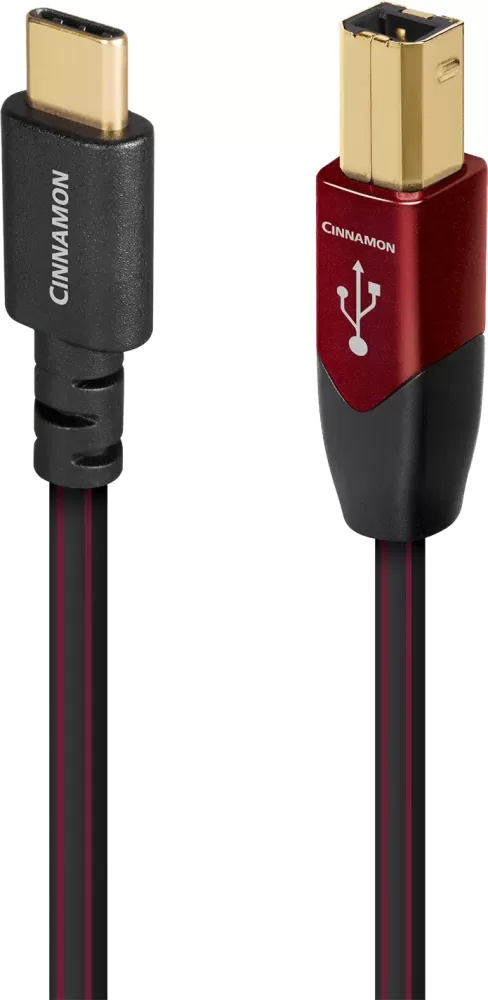AUDIOQUEST Cinnamon USB-C to USB-B cable
The AudioQuest Cinnamon USB-C to B cable features high-purity 1.25% silver conductors for improved signal clarity and a Metal-Layer Noise-Dissipation system to effectively reduce radio-frequency interference, ensuring a clean and stable connection.
Warranty Period : Limited Lifetime (Domestic)
Sold as: 1 UnitThe AudioQuest Cinnamon USB-C to B cable is designed to deliver superior performance for digital audio and data transfer. With high-purity 1.25% silver conductors, it offers enhanced signal clarity and reduced distortion compared to standard cables. The inclusion of Metal-Layer Noise-Dissipation technology helps to efficiently minimize radio-frequency interference (RFI), ensuring that your connection remains stable and free from unwanted noise. This combination of premium materials and advanced noise-reduction technology makes the Cinnamon USB cable an excellent choice for achieving reliable, high-quality digital performance.
Solid 1.25% Silver Conductors
The AudioQuest Cinnamon USB cable employs solid conductors to significantly reduce electrical and magnetic interactions between strands. Digital signals, which travel almost exclusively on the conductor’s surface, benefit from the application of thick layers of 1.25% silver plating to AudioQuest’s Long-Grain Copper (LGC) conductors. By positioning this high-quality silver on the exterior, the cable achieves enhanced noise dissipation and overall performance—providing a superbly cost-effective solution for maximizing digital signal integrity.
Metal-Layer Noise-Dissipation
While achieving complete shield coverage is straightforward, preventing unwanted radio-frequency interference (RFI) from reaching and distorting the ground reference requires a more sophisticated approach. AudioQuest’s Metal-Layer Noise-Dissipation system goes beyond conventional shielding by absorbing and reflecting most RFI before it reaches the ground layer. This proactive method ensures that the equipment’s reference ground remains stable, thereby preserving the purity of the digital signal.
Hard-Cell Foam Insulation
To maintain the precise geometry of signal pairs, the Cinnamon USB cable uses Hard-Cell Foam Insulation. Unlike traditional insulation materials that absorb and later release energy—resulting in distortion—this insulation is nitrogen-injected to form microscopic air pockets. Since nitrogen does not absorb energy, it minimizes interference while the inherent stiffness of the foam keeps the conductors aligned consistently along the cable’s length, ensuring a stable impedance and further reducing distortion.
Direction-Controlled Conductors
Every drawn metal strand features a non-symmetrical grain structure, imparting inherent directionality that affects RF impedance. AudioQuest meticulously aligns these conductors to ensure that any induced noise is directed away from sensitive circuit areas. Through careful testing of each batch of metal, the optimal orientation is determined and clearly indicated with arrows on the connectors. These markings not only optimize the noise-dissipation process by aligning the shield and ground correctly but also play a critical role in the overall performance of the cable by effectively channeling unwanted interference away from the signal path.
|
|




Validate your login
Sign In
Create New Account